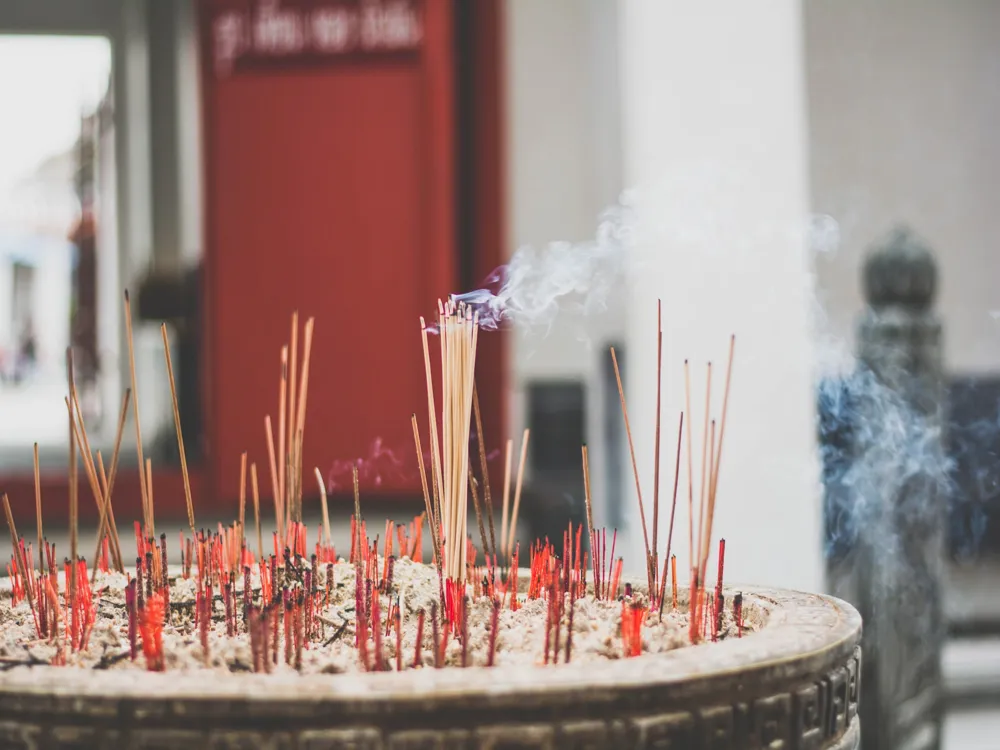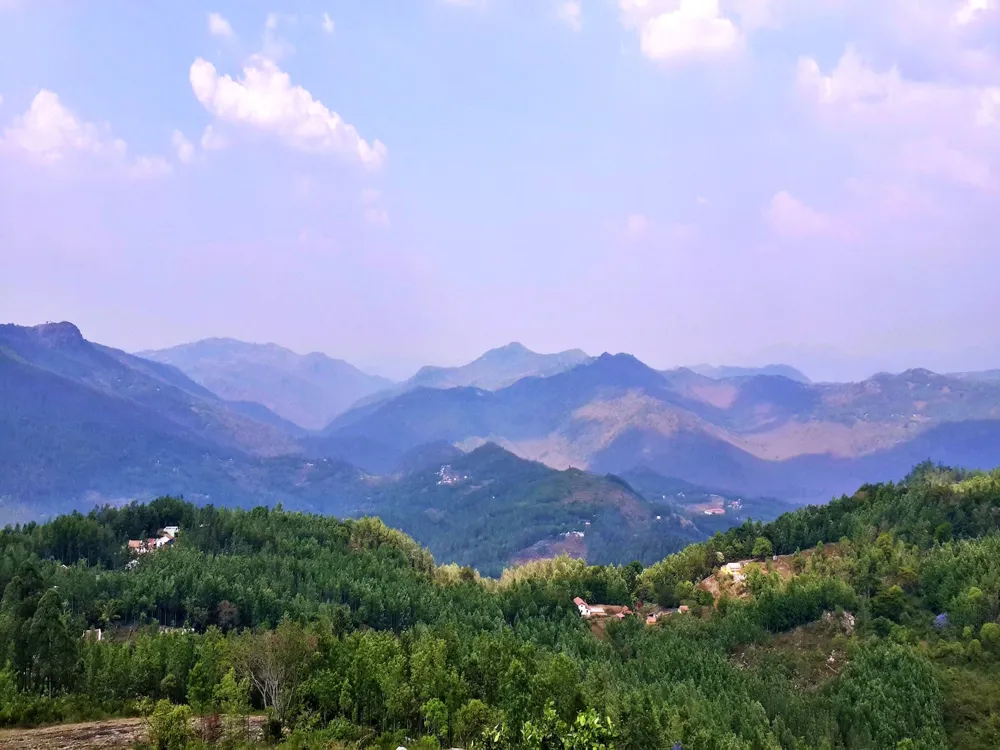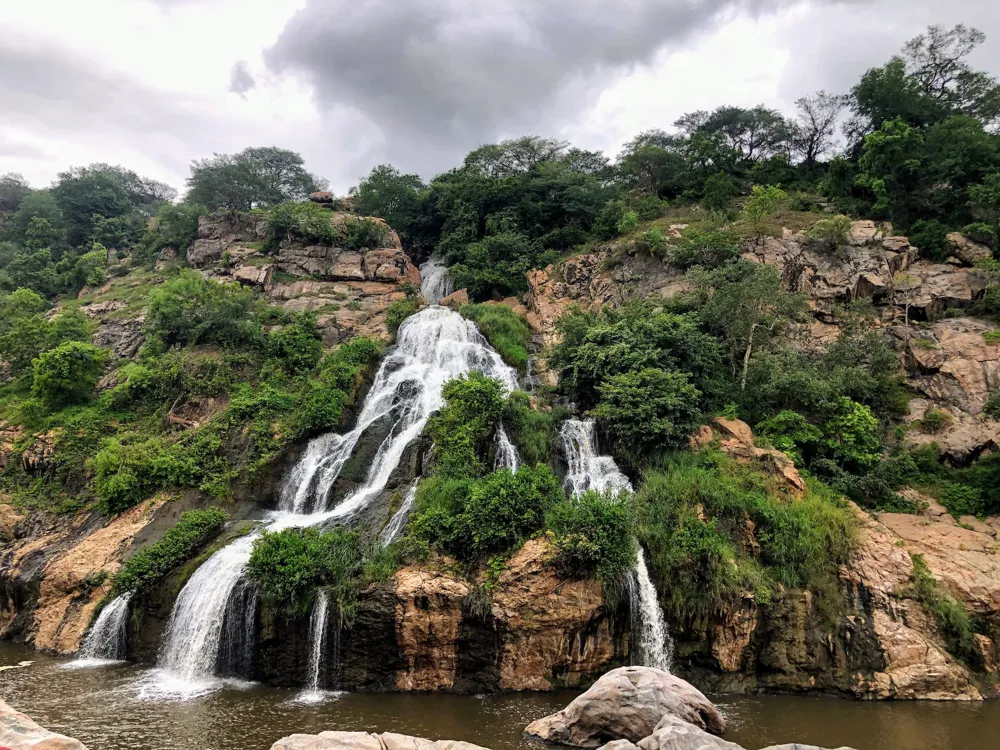Pentagram Village, nestled in the serene landscapes near Hogenakkal in Tamil Nadu, is a hidden gem waiting to be explored. Known for its rich cultural heritage and picturesque surroundings, this village offers a unique glimpse into the traditional Tamilian way of life. The village is not only a retreat for nature lovers but also a haven for those interested in history and culture. The history of Pennagram Village is deeply rooted in the ancient traditions of Tamil Nadu. It has been a witness to centuries of history, from the rule of great South Indian dynasties to the colonial era and beyond. The village's name itself, 'Pennagram', resonates with cultural significance, indicating a long-standing heritage that the villagers are proud of. The natural beauty of Pennagram Village is unparalleled. Surrounded by lush greenery and situated near the Hogenakkal Falls, the village offers breathtaking views and a tranquil environment. The sound of the cascading waterfalls, coupled with the rustic charm of the village, creates a peaceful and rejuvenating atmosphere. Agriculture is the mainstay of Pennagram Village, with a majority of the population engaged in farming activities. The village showcases a variety of crops and plantations, offering visitors an insight into the agricultural practices of rural Tamil Nadu. The local cuisine, made from fresh and organic produce, provides a delightful culinary experience for visitors. The people of Pennagram Village are known for their hospitality and warm nature. Visitors are often welcomed into the homes of the locals, offering a chance to experience their simple yet content way of life. The village also celebrates various festivals and events, which are a true reflection of Tamil Nadu's rich cultural tapestry. For those looking to explore rural India, Pennagram Village is a perfect destination. It's not just a place to visit; it's an experience to be cherished, providing a deep connection with nature, culture, and history. The architecture of Pennagram Village is a fascinating blend of tradition and history, reflecting the rich cultural heritage of Tamil Nadu. The village's structures are predominantly built in the Dravidian style, which is characteristic of South Indian architecture. This style is noted for its intricate carvings, bold and vibrant colors, and symmetrical designs, which are evident in the village's buildings and temples. One of the most striking features of Pennagram's architecture is the use of locally sourced materials. The buildings are primarily constructed using stones, clay, and wood, which not only makes them sustainable but also helps them blend seamlessly with the natural surroundings. The roofs are often made of palm leaves or tiles, providing a rustic yet charming appearance. The village temples are architectural marvels, showcasing the skill and artistry of ancient Tamil craftsmen. These temples are not just places of worship but also serve as cultural centers for the village. The intricate stone carvings, towering gopurams (temple towers), and detailed sculptures of deities and mythical creatures are a testament to the village's artistic legacy. The layout of Pennagram Village also reflects traditional South Indian planning principles. The houses are typically built around a central courtyard, which serves as a communal space for family gatherings and social activities. This design not only fosters a sense of community but also aids in natural ventilation and lighting. Another unique aspect of the village's architecture is the harmonious coexistence of the built environment with nature. The buildings are often surrounded by lush gardens and orchards, creating a tranquil and picturesque setting. This integration of architecture and nature is a hallmark of Pennagram's design philosophy. The architecture of Pennagram Village is not just about buildings and temples; it's a reflection of the village's soul. It tells the story of a community that values its traditions, respects its environment, and cherishes its cultural identity. The ideal time to visit Pennagram Village is between October and March when the weather is pleasant, making it perfect for exploring the village and its surroundings. Respect local customs and traditions. Dress modestly, especially when visiting temples, and always ask for permission before taking photos of people or private properties. While there are limited hotels in the village, homestays provide a more authentic experience, allowing you to immerse yourself in the local culture and cuisine. Walking is the best way to explore Pennagram Village. It allows you to closely observe the village life, and architecture, and interact with the locals. Don't miss trying the local cuisine, which is known for its flavors and made from fresh, locally sourced ingredients. Vegetarian dishes are predominant, but non-vegetarian options are also available. If possible, plan your visit during local festivals or cultural events to experience the vibrant culture and traditions of Pennagram Village. Pentagram Village is well-connected and can be easily reached by various modes of transportation. The nearest major city is Dharmapuri, from where you can hire taxis or take local buses to reach the village. If you prefer to travel by train, the nearest railway station is also in Dharmapuri. For those traveling by air, the nearest airport is Bangalore, from where you can take a taxi or bus to reach Pennagram Village. The journey offers scenic views and a glimpse into the rural landscapes of Tamil Nadu. Read More:Overview of Pennagram Village, Hogenakkal, Tamil Nadu
The architecture of Pennagram Village
Tips When Visiting Pennagram Village
Best Time to Visit
Local Etiquette and Customs
Accommodation Options
Exploring the Village
Food and Cuisine
Festivals and Cultural Events
How To Reach Pennagram Village
Pennagram Village
Hogenakkal
Tamil Nadu
NaN onwards
View hogenakkal Packages
Hogenakkal Travel Packages
View All Packages For Hogenakkal
Top Hotel Collections for Hogenakkal

Private Pool

Luxury Hotels

5-Star Hotels

Pet Friendly
Top Hotels Near Hogenakkal
Other Top Ranking Places In Hogenakkal
View All Places To Visit In hogenakkal
View hogenakkal Packages
Hogenakkal Travel Packages
View All Packages For Hogenakkal
Top Hotel Collections for Hogenakkal

Private Pool

Luxury Hotels

5-Star Hotels

Pet Friendly





















